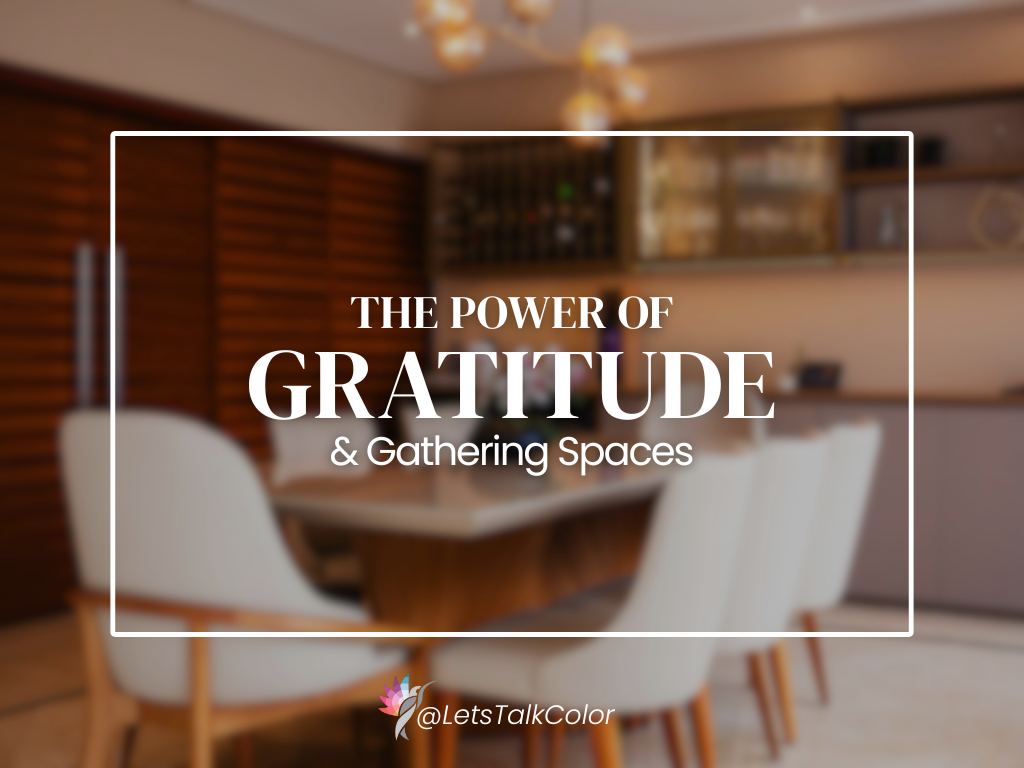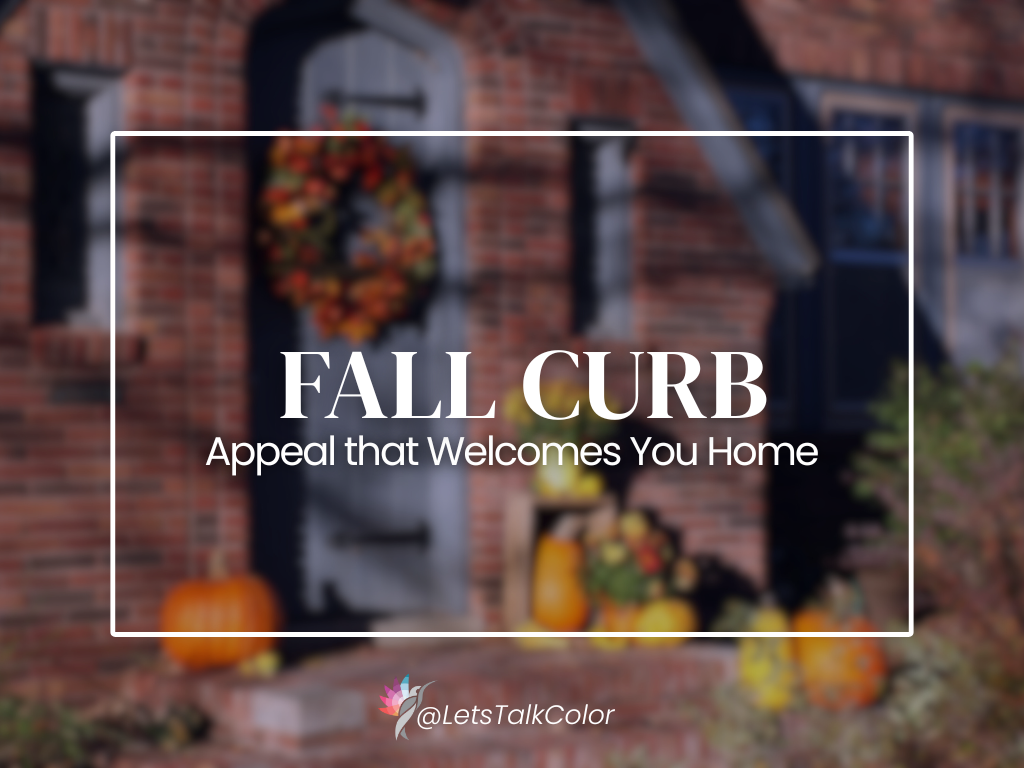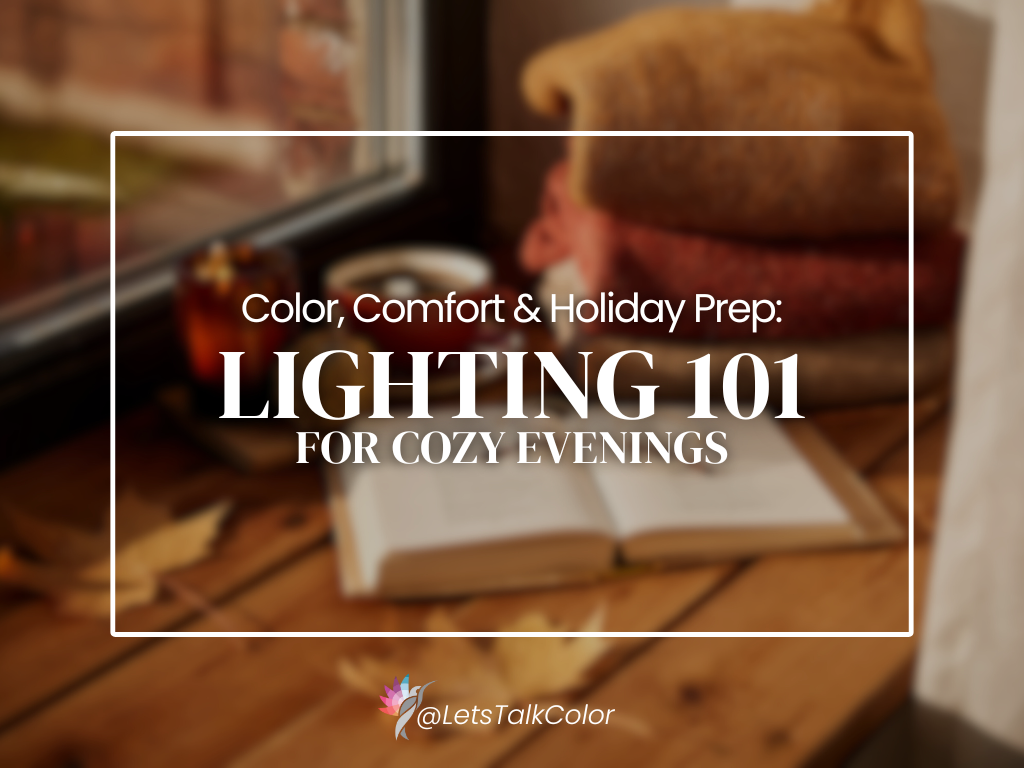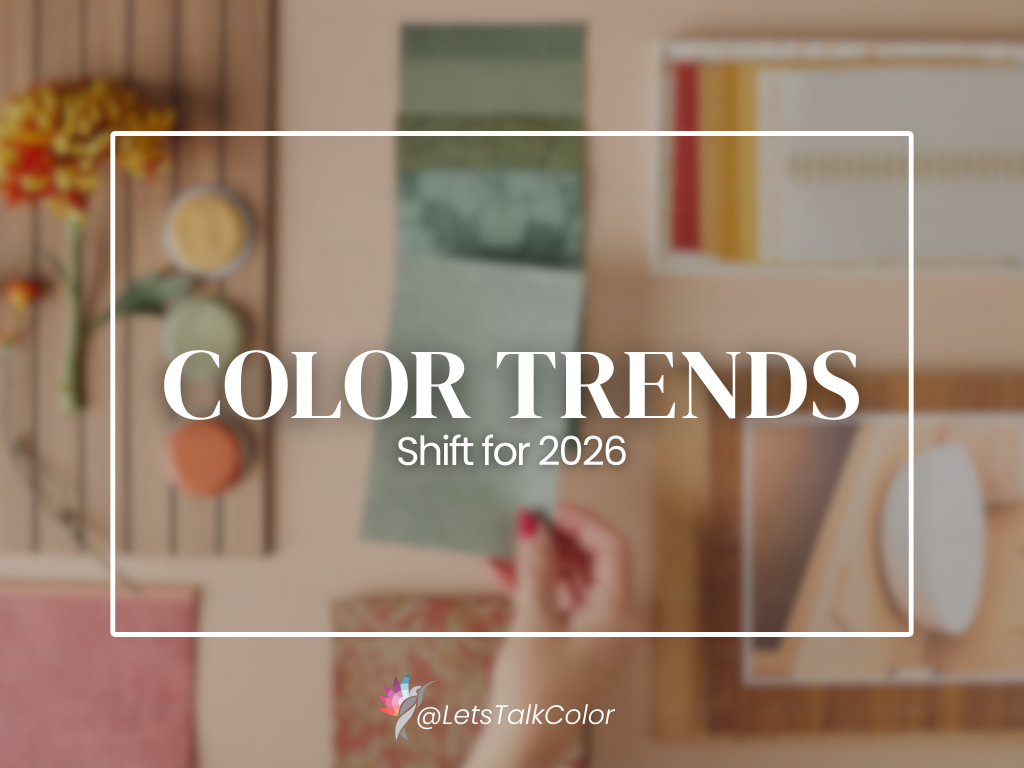As the days get shorter and the light shifts, our homes start to feel different. Fall isn’t just about swapping out throw pillows or adding pumpkins — it’s a perfect time to evaluate your home with a designer’s eye and set yourself up for a cozy, functional season ahead.
Here’s how to think like a professional when you prepare your home for fall.
1. Reevaluate Lighting — Because Daylight is Changing
Fall light is softer and sits lower in the sky. Colors shift dramatically — that perfect summer white can suddenly look gray or dull.
- Check your bulbs: Look for LEDs with a warm Kelvin range (2700K–3000K) in living areas to balance the cooler outdoor light. Task spaces like kitchens benefit from neutral 3500K lighting.
- Layer your lighting: Don’t rely on overhead lights alone. Add table lamps, sconces, and floor lamps to create a triangle of light — this makes rooms feel warm and inviting.
- Test color in fall light: If you’ve been considering repainting, evaluate your samples now. Autumn’s softer sun shows undertones differently than summer.
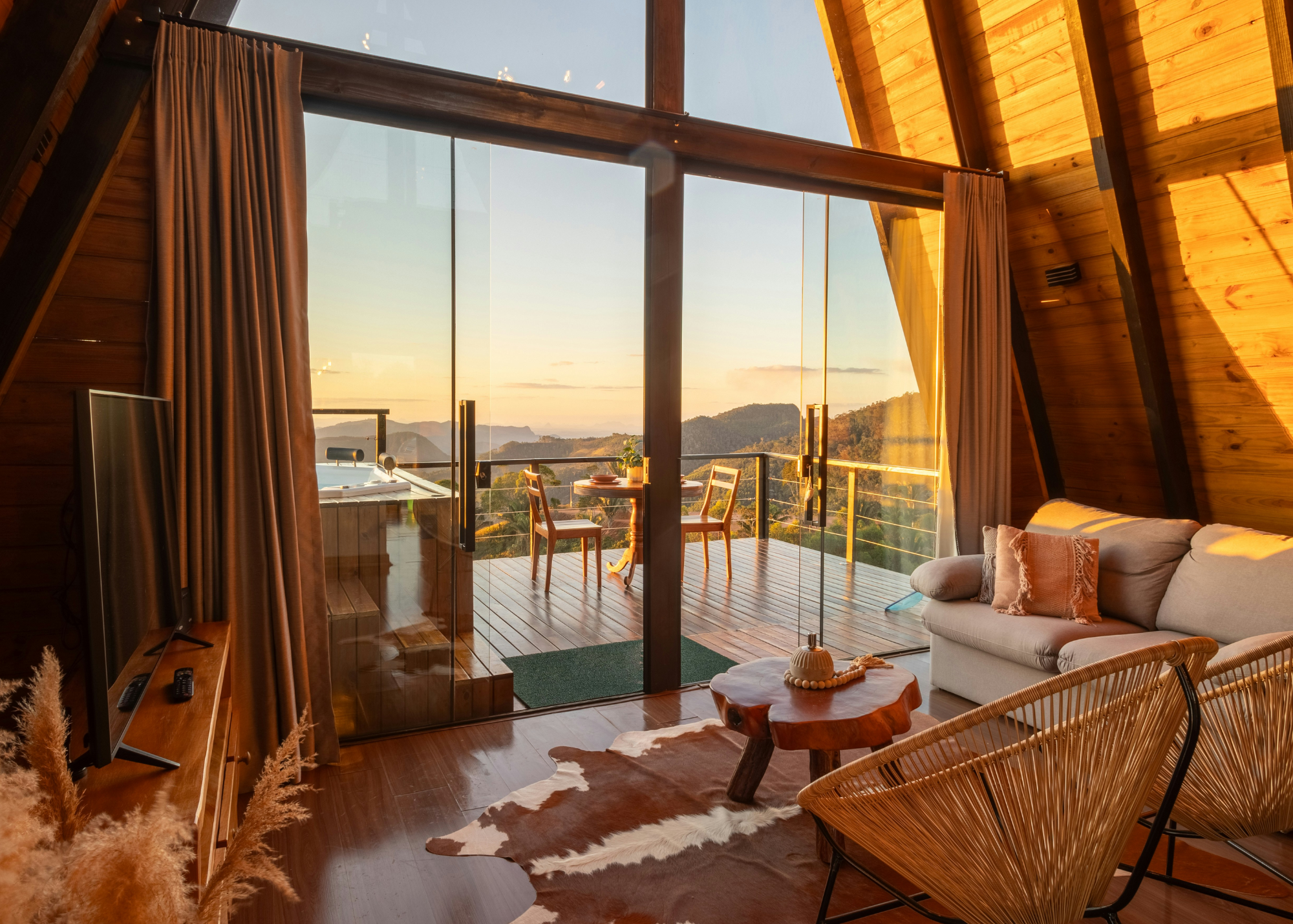
2. Edit & Rebalance Your Color Palette
Fall doesn’t mean your home has to look like a pumpkin patch. Instead, it’s about adding depth and dimension — the kind that feels intentional and cozy without being cliché.
- Evaluate your neutrals.
As daylight softens and shifts toward cooler tones, many homeowners notice their favorite “go-to” beige or gray suddenly feels flat or lifeless. That’s because fall light has less yellow and bluer — it drains warmth from color.
Add that warmth back through layered textiles (throws, pillows, rugs) in taupe, caramel, or mushroom tones. If your paint feels cold, consider shifting to a creamier neutral or one with subtle warm undertones to restore balance. - Deepen, don’t darken your palette.
When light changes, color relationships change too. The goal isn’t to go darker — it’s to go richer. Think muted greens, terracotta, cinnamon, plum, or ochre — colors with earthy undertones that bring depth without heaviness.
If your fixed elements (floors, counters, tile) lean cool, introduce warmth through fabrics, art, or accessories rather than competing with what’s already there. Balance is what makes the space feel grounded and inviting.
3. Refresh Textiles for Warmth & Function
Design Isn’t Just What You See — It’s How You Feel
Design goes beyond aesthetics — it’s about how a space supports you, especially as the seasons change. Fall invites warmth, softness, and sensory comfort — all of which start with texture, light, and thoughtful layering.
- Swap light for layered.
Trade airy summer sheers for lined curtains that add both insulation and visual weight. Bring out heavier throws, boucle or wool pillows, and tactile fabrics that instantly make a room feel grounded. - Prioritize comfort and practicality.
Fall brings real life — muddy boots, rain, and cozy nights in. Add washable rugs or layered doormats in transitional areas. If your upholstery or dining chairs take a beating, darker slipcovers or patterned fabrics can extend longevity while disguising wear beautifully. - Curate cozy corners.
Ask yourself: is your reading nook or sofa area truly inviting? Add a side table for tea, a warm lamp, or a textured throw to make it feel like your favorite spot to unwind. - Use texture as a color tool.
Color isn’t just pigment — texture changes how we perceive it. Matte and fuzzy surfaces absorb light and make colors look deeper; glossy or smooth ones reflect light and make colors appear lighter or cleaner.
Layering soft tones (think beige on caramel, cream on mushroom) creates subtle contrast, depth, and harmony without visual clutter.
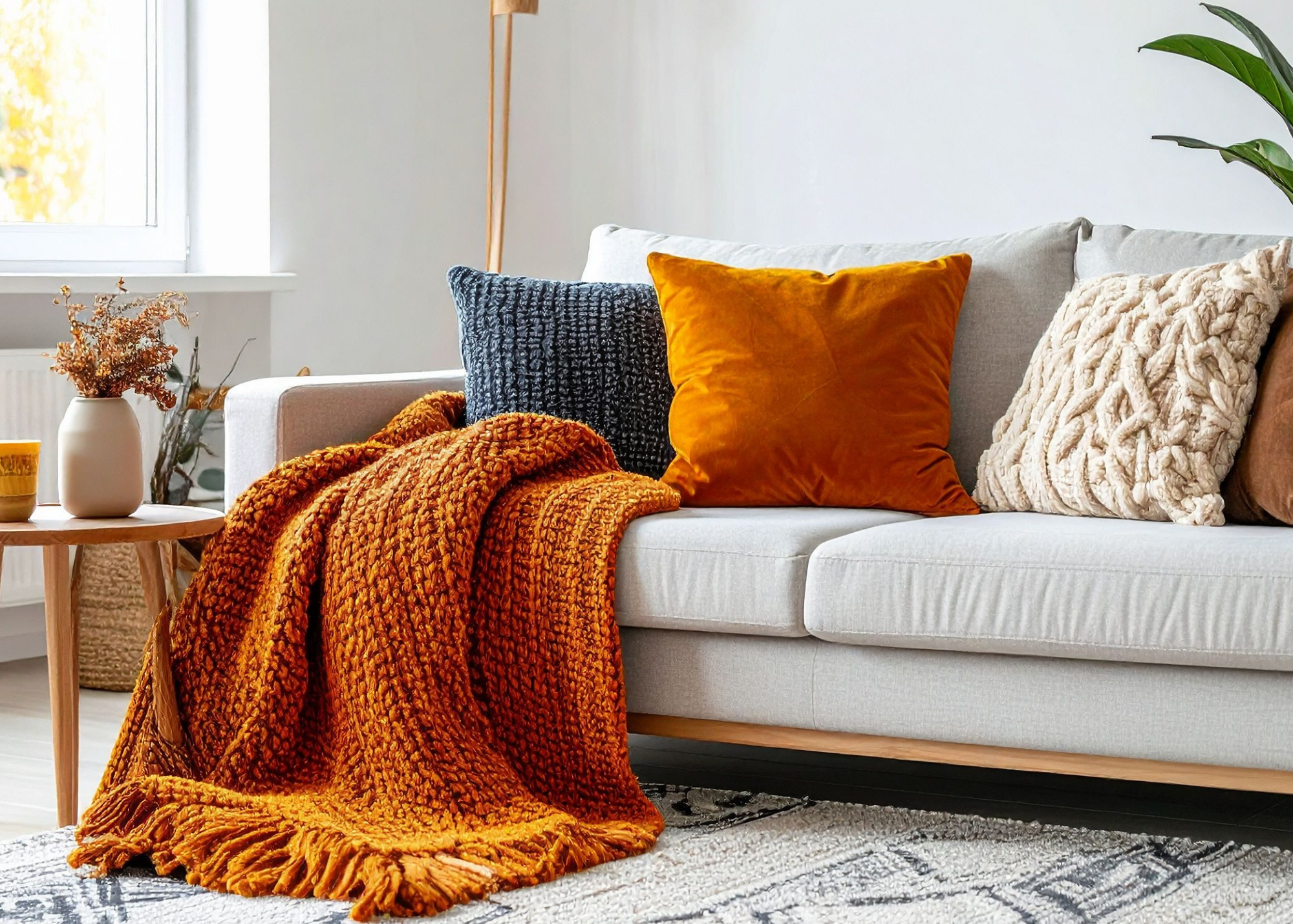
4. Assess Furniture Layout & Flow
As we move indoors more, circulation matters.
- Create conversation zones: Pull seating slightly closer for intimacy and warmth.
- Check balance: Heavy furniture can feel visually heavier in darker months. Offset with lighter accents (mirrors, glass, metallic finishes).
- Add functional landing spots: Side tables for hot drinks, baskets for throws, and ottomans for extra guests.
5. Prioritize Scent & Mood
Design goes beyond visuals.
- Layer scent intentionally: Switch out crisp summer citrus for warm notes — cedar, vanilla, amber, sandalwood — but keep it subtle. Overly sweet scents can feel cloying.
- Candles with intention: Choose natural wax and unscented tapers for dining areas so meals remain the star. (Don’t burn your house down! Safety first!)
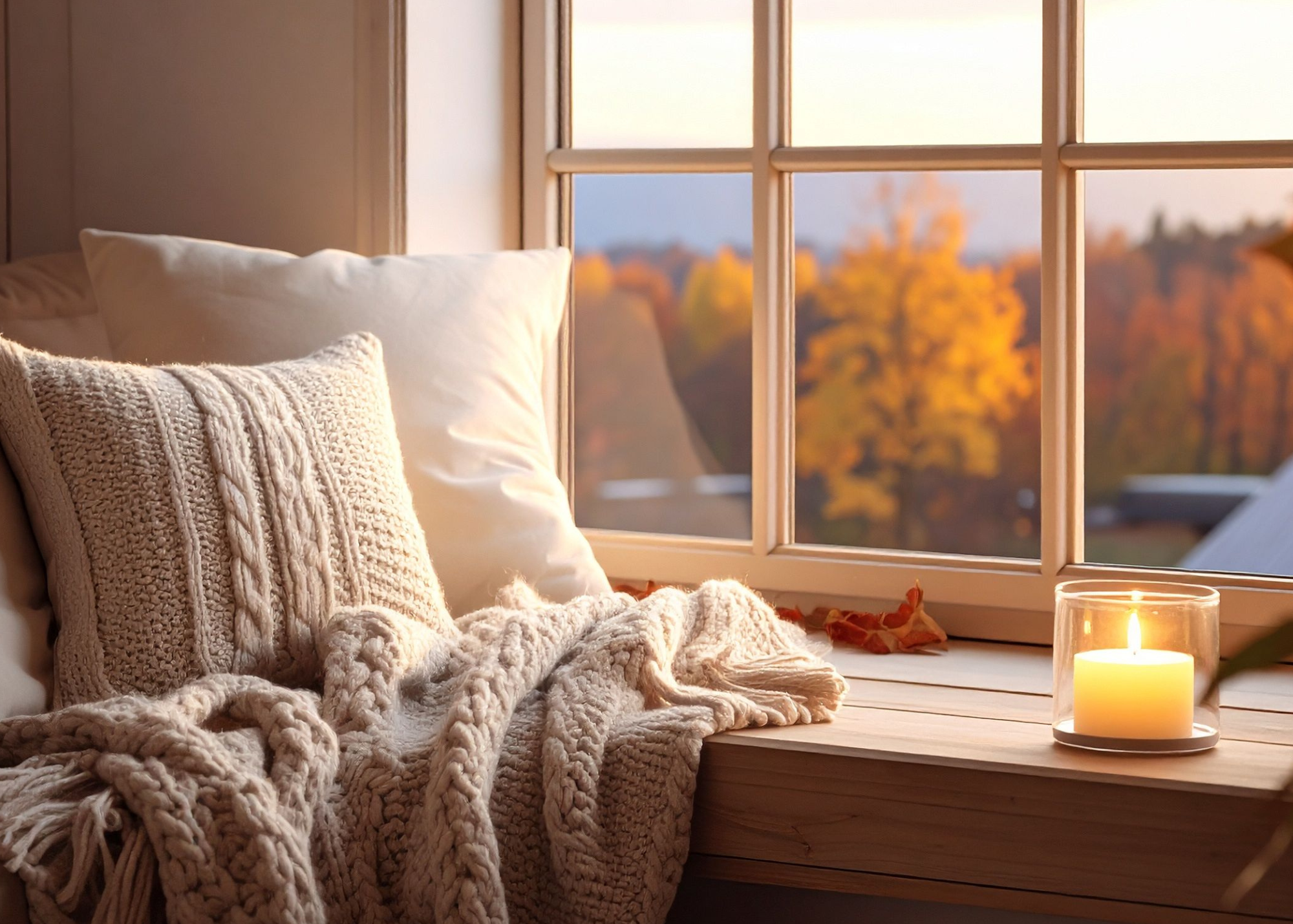
6. Get Ahead of Holiday Prep
Fall is the designer’s secret window for holiday readiness.
- Declutter now: Remove or donate anything that no longer serves your space. Fewer visual distractions = more impact when you add décor later.
- Inventory entertaining spaces: Do you have enough seating? Is your dining lighting adequate? Are your guest rooms functional and fresh?
- Check paint touch-ups: Fall is a great time for small paint updates — trim scuffs, door refreshes, or even a new accent wall.
Preparing for fall isn’t about “more stuff” — it’s about being intentional. Think about light, color, and how your home will support your life as the seasons shift. The small updates you make now — a better light bulb, a warmer accent color, a rearranged seating area — pay off in comfort and beauty all season long.
Want personalized guidance on your space as the seasons change? A Professional Color and Design Consultation can help you choose paint that works in fall light, update key finishes, and plan ahead for holiday entertaining without overwhelm.
Schedule a Consultation here → My Services

